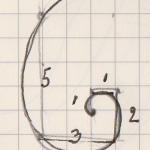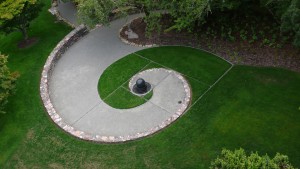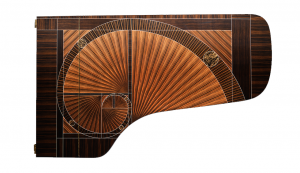Mathematics crops up throughout A Distant Prospect as one of the intellectual avenues which Lucy employs to make sense of life in a world that is not always as one would wish.
Fibonacci numbers and leg calipers were Lucy’s first impressions on her bemused classmates at St Dominics in February 1928:

I gazed at the number that was now written on the board. The class silently waited for my reply. It seemed that everyone knew the answer I should give. But I did not know anything that happened in 1597. I only knew about the number one thousand, five hundred and ninety-seven.
‘’Tis a Fibonacci number,’ I said.
‘Pray and what will ye tell us about the Fibonacci sequence?’
Immediately I replied, my response revealing my own softer West Country accent. ‘Mathematically, the Fibonacci sequence would be represented as Fn = Fn-1 + Fn-2. ’Tis a numerical sequence whereby the ratio of two consecutive numbers converges on the golden ratio. You can see fibonacci patterns in nature, in the arrangement of petals in flowers or branches on trees…
The Fibonacci sequence which, outside of India, first appears in the book Liber Abaci (1202) by Leonardo of Pisa, known as Fibonacci, starts 1, 1, 2, 3, 5, 8, 13, 21, 34, 55, 89, 144, 233, 377, 610, 987, 1597, 2584 …
The natural occurrence of spirals following the Fibonacci sequence as inspired many imitations, such as those below
And be sure to view Jonathon Quintin’s related video depicting the “Golden Key”, the ratio which we generally perceive to be the ideal proportions in architecture and nature.



